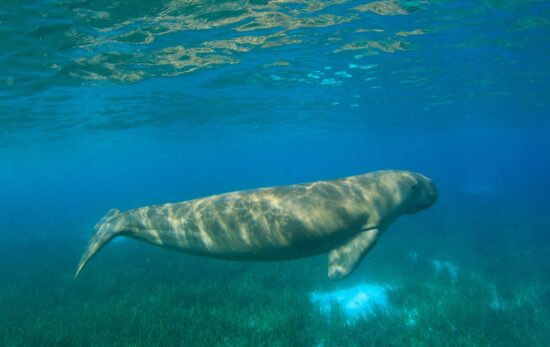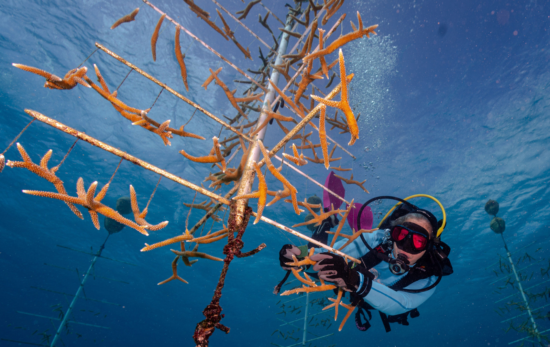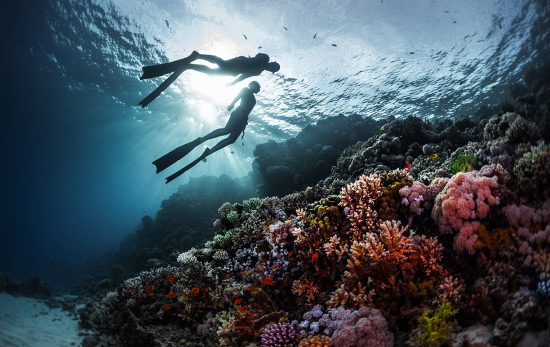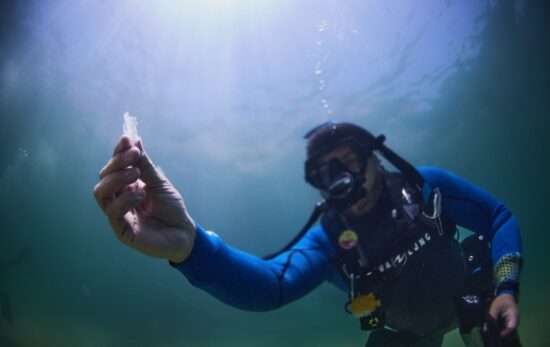Plastic, particularly synthetic plastic derived from fossil fuels, has become integrated into virtually every aspect of our lives. Its versatility and durability lends itself to its popularity, and infamy. As of today, there are no organisms that have evolved to digest plastic, and plastic does not completely degrade or break down to be reused in the environment.
As people, we also have changed our habits and don’t reuse materials as much as in the past, because plastic is prevalent and convenient to use and discard. This discarded plastic lasts for many, many years in landfills, streets, rivers, and the ocean.
If you’re a diver reading this, you may have seen trash on the beach as you were entering the water for a dive, seen plastic floating in the water, or even hurriedly tried to store the plastic wrapping from your snack in between dives safely before the wind snatched it away. And now, you want to learn more about what you can do to help reduce the amount of plastic pollution in the environment and oceans.
One action you can take is buying and using recycled plastic products. Buying products from recycled plastic matters, because it is part of the larger movement to keep plastic out of the ocean, and to protect the health of the environment, the ocean, and all of Earth’s inhabitants.
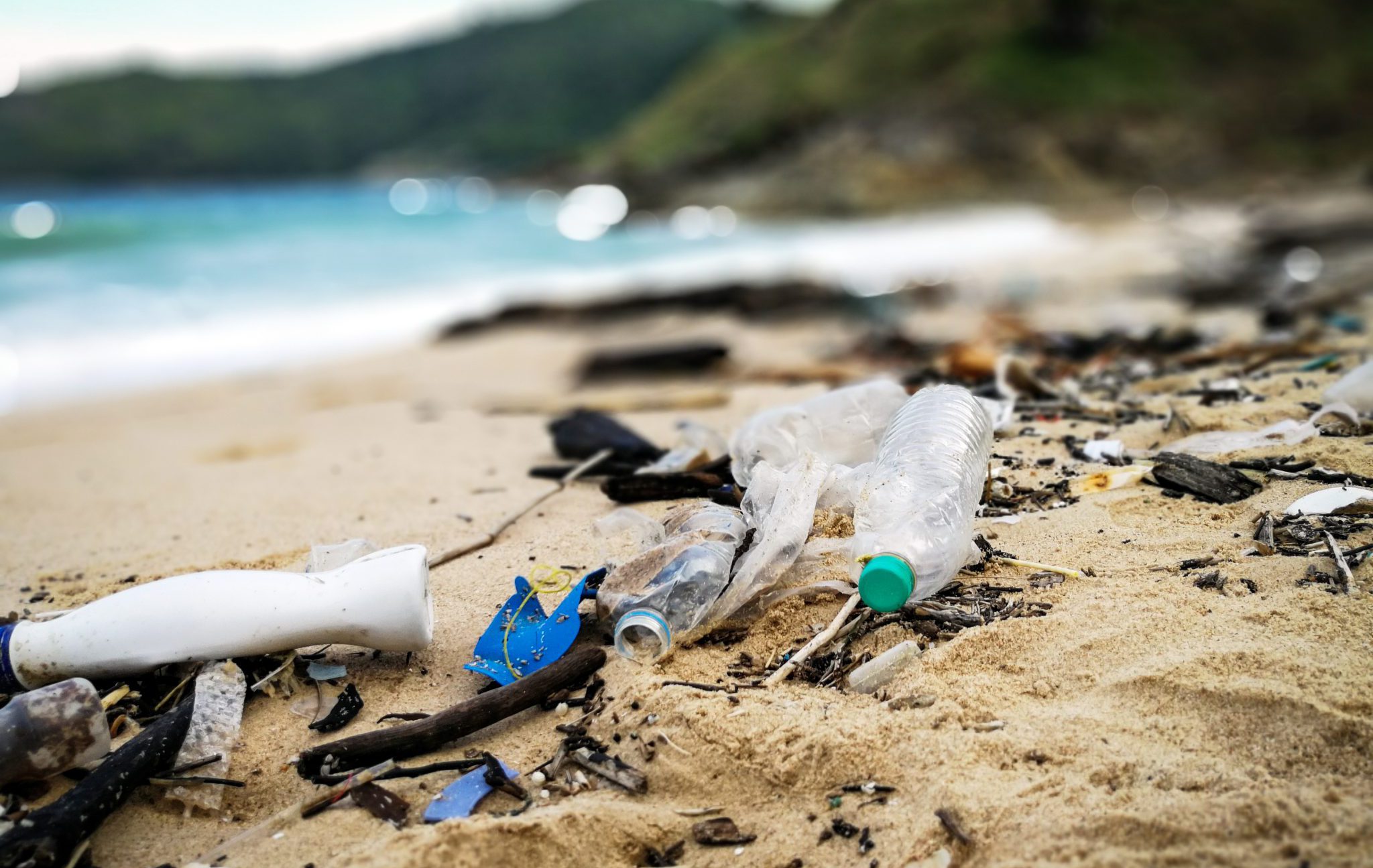
Plastic Problems
Plastic pollution leads to many problems, some of them well-understood and others less so. For example, the problem most associated with plastic is littering. Large amounts of plastic can be found on land, in rivers, lakes and oceans. Also, an estimated 11 million metric tonnes enters the ocean per year. Not only is this an aesthetic problem, but this also harms the health of the environment and all living things. For example, plastic pollution makes coral reefs more susceptible to disease, and seabirds have starved to death due to eating plastic, filling their stomachs with undigestible items and leaving them unable to get any nutrients. Plastic pollution also presents health problems to humans – from toxins leaching from plastic into food sources, to the surface of plastics being a foundation for pathogens.
Microplastics are small (less than 5 mm / 1/4 inch) pieces of plastic and are an emerging issue. Recently, many scientists have dedicated their research to understanding the impacts of these nearly invisible pollutants. In general, plastic degrades and breaks down into smaller pieces. Small organisms consume them, and they enter the food chain, eventually being consumed by people. More research is needed to fully understand the impacts and risks to humans.
In addition, the production of plastic harms the environment due to the way manufacturers need to source natural resources, process crude oil and use chemicals to make plastic. Transporting and processing the resources in factories all add to carbon emissions and other greenhouse gasses.
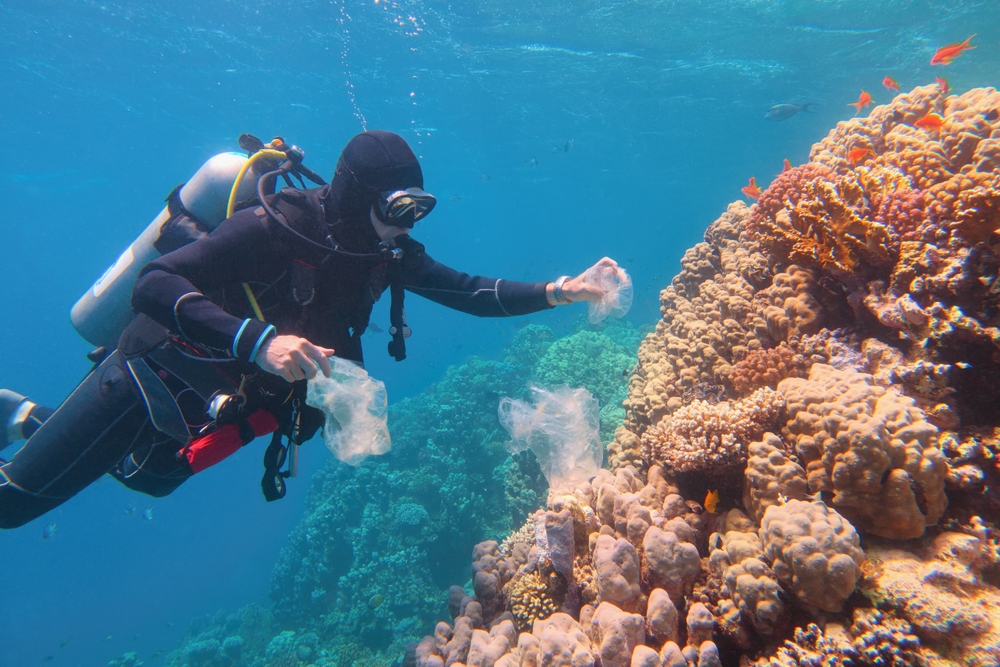
Some Solutions
The ultimate goal is to keep plastic out of the ocean (and the environment as a whole) and clean up the trash already there. Ideally, sustainable materials would replace plastic, and the plastic in circulation would be reused and broken down to its components when it can no longer be recycled. If you’re not actively involved in researching plastic alternatives or how to effectively recycle all plastic, you might be wondering how you can be part of the solution. That’s easy! You can make a difference in a number of ways.
The INC (Intergovernmental Negotiating Committee) of the United Nations is currently developing environmental legislation to place legally binding limits on the production and disposal of single-use plastics globally. PADI AWARE Foundation has taken an active role in the global plastics treaty negotiations, and they need your voice to demand a strong Global Plastics Treaty that tackles the marine debris crisis. You can sign the petition of support or take part in the Dive Against Debris citizen science program to provide critical data to inform policy change.
Day in and day out, you can use up-cycled products and buy products made from recycled plastic materials. This is important because you reduce the demand for making more new plastic, which in turn conserves natural resources, reduces greenhouse gas emissions and keeps plastic out of landfills and the environment. Purchasing products made from recycled plastic also increases demand for these products and sends a signal to companies, manufacturers, and decision makers that people want more recycled plastic products.
Companies That Sell Recycled Plastic Products
Fourth Element
Fourth Element is a UK-based company that produces eco-friendly dive gear and clothing through their OceanPositive initiative. This is definitely one of the many dive industry companies working towards a more sustainable business that is better for the ocean. Fourth Element’s sustainable dive products include natural rubber wetsuits, recycled nylon ocean wear and recycled scuba fins. In addition, they have taken measures to reduce their carbon footprint by using renewable energy sources and implementing sustainable practices in their manufacturing process.
Bureo
Bureo is a company that works to help solve the plastic pollution crisis by recycling fishing nets into reusable products. Durable types of plastic, like nylon, are used in modern fishing nets, meaning they can easily be recycled into a variety of plastic products. Bureo sells their recycled ocean plastic in the form of products, like skateboards and sunglasses.
Patagonia
Patagonia uses NetPlus® material to make recycled plastic clothing. Their NetPlus® collection includes shorts, hats, and jackets.
4ocean
Interested in bracelets made from ocean plastic? Check out 4ocean’s bracelets! 4ocean makes bracelets from ocean plastic and trash, and the company pledges to remove one pound of plastic from oceans and coastlines for each sale.
Mafia
Mafia makes and sells bags and accessories from repurposed kitesurfing, windsurfing and sailboat sails. This is another cool example of how creative thinking can extend the life and value of materials that are difficult to recycle, thereby preventing them from entering landfills and the ocean.
Preserve
Preserve is a pioneer in recycled plastic products, crafting everyday household items from marine plastic. This awesome brand transforms items, like yoghurt cups into toothbrushes and razors and take-out containers into food storage! Additionally, the Preserve Ocean Plastic Initiative (POPI) creates products specifically from plastic debris that was collected from waterways and coastlines, at risk of entering the ocean.
Green Toys
In short, Green Toys is an eco-friendly toy company. All of their toys are crafted with 100% recycled materials, consisting of mostly milk jugs and the occasional yoghurt cup. This way, your kid’s used milk jugs might end up back in their playroom! Green Toys use soy ink on their packaging, and all their products are free from screws, glue and paint. Furthermore, they manufacture in the USA, avoiding the effects of carbon footprint stacking up from importation.
There are many more companies making and selling products from recycled ocean bound plastic and plastic bottles. Take a look at these two articles highlighting ocean-friendly companies and companies “capitalizing on the unpopularity of plastics.”
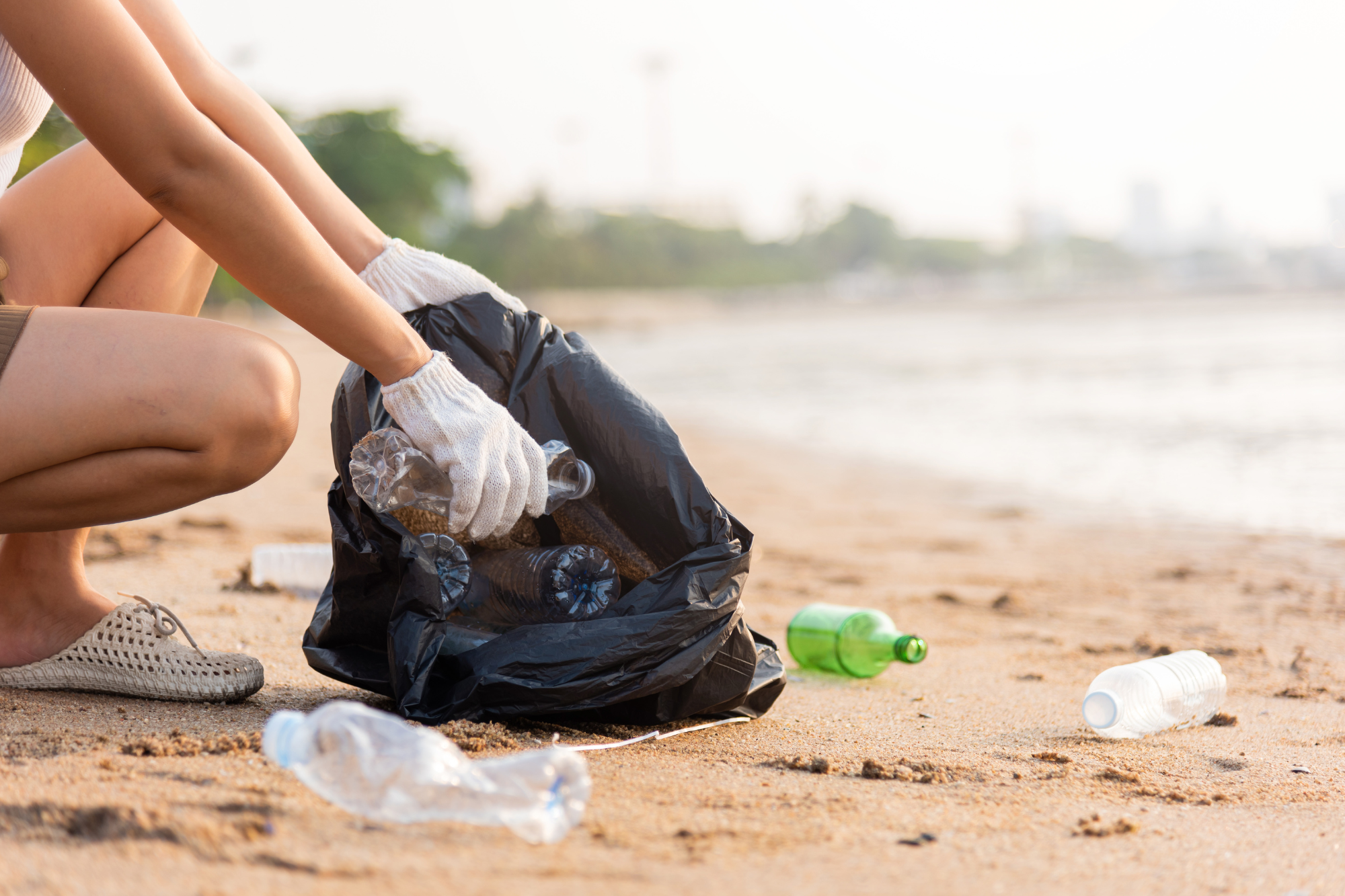
What To Be Aware of When Buying Recycled Plastic Products
When buying recycled products of any kind, it’s important to keep safety and sustainability in mind. Here are a few key points to bear in mind when purchasing:
- Where the products are manufactured. While using recycled materials is brilliant, some brands may manufacture in countries with lower production costs. The downside is that this often means they are further away from the company itself, incurring high carbon footprint rates when the finished products are transported. Look for companies that manufacture in several locations to reduce carbon emissions during transport, or in the same country as they are based!
- The quality of the materials. If the company is outsourcing the plastic, it is crucial that it comes from a reputable plastic processing facility, particularly when it comes to recycled PET (Polyethylene Terephthalate). Most reputable companies will list more information on their website about where exactly their plastic comes from, and how it’s cleaned before use!
- Certification and standards. When choosing a recycled plastic product, check for eco-certifications, such as the Global Recycled Standard (GRS). This helps verify the products are truly recycled and clarifies the company’s environmental impact. While checking the labels or website, also look for the percentage of recycled plastic the product contains. Overall, its beneficial to choose something that’s made from 100% recycled materials, as opposed to an item that “contains recycled materials” as this could be as little as 10%.
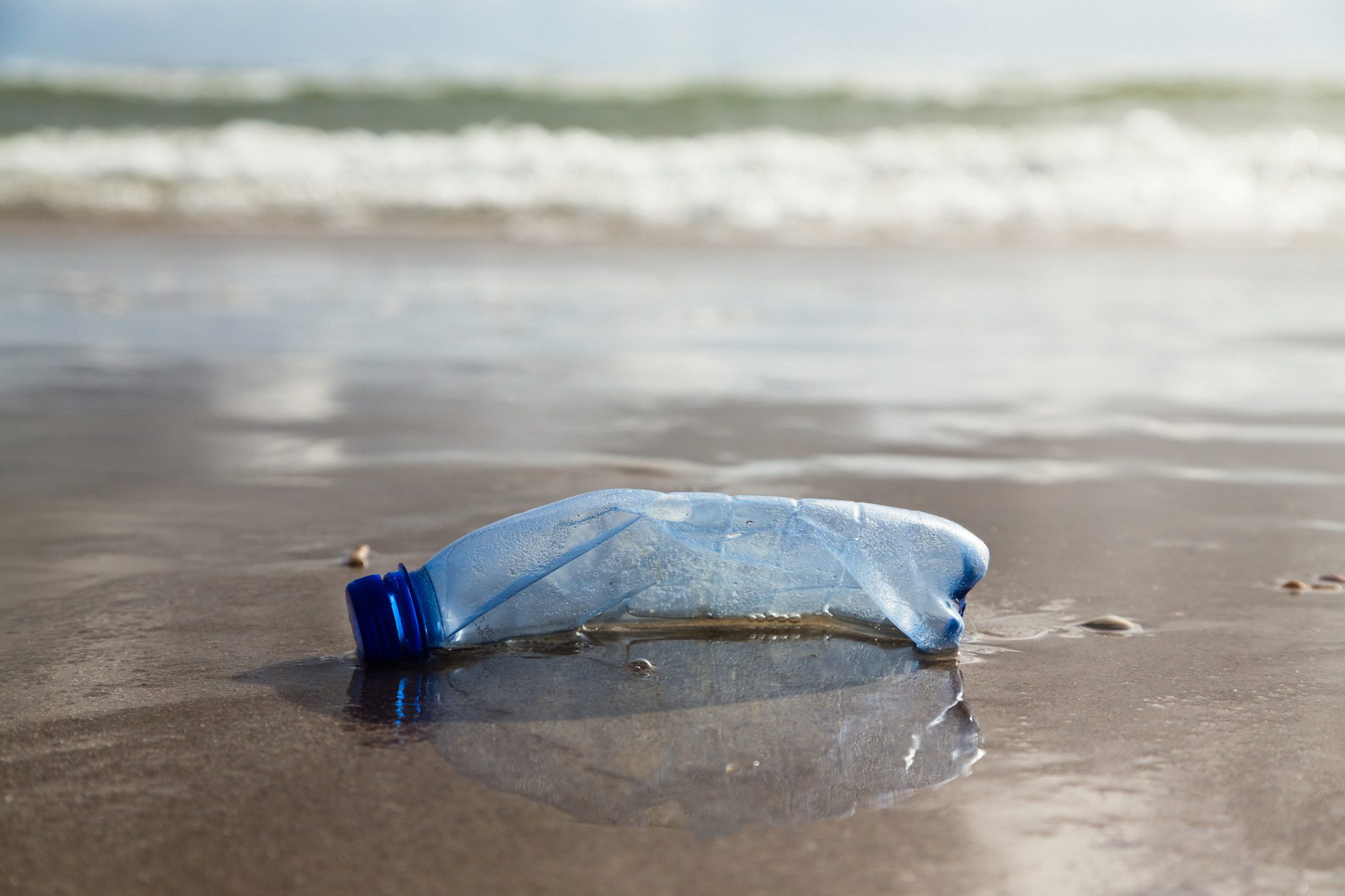
Want To Do More?
We all have a role to play in living sustainably and protecting the ocean. Now, you can take action to make a huge impact. PADI is rallying a community of ocean enthusiasts to support PADI AWARE at the international policy table. This is a progressive effort to end plastic pollution and pressure international efforts for a strong Global Plastics Treaty.
Stay informed and learn more about PADI AWARE’s marine debris program.
Read more about what you can do, and what PADI does in the effort to reduce plastic pollution.
